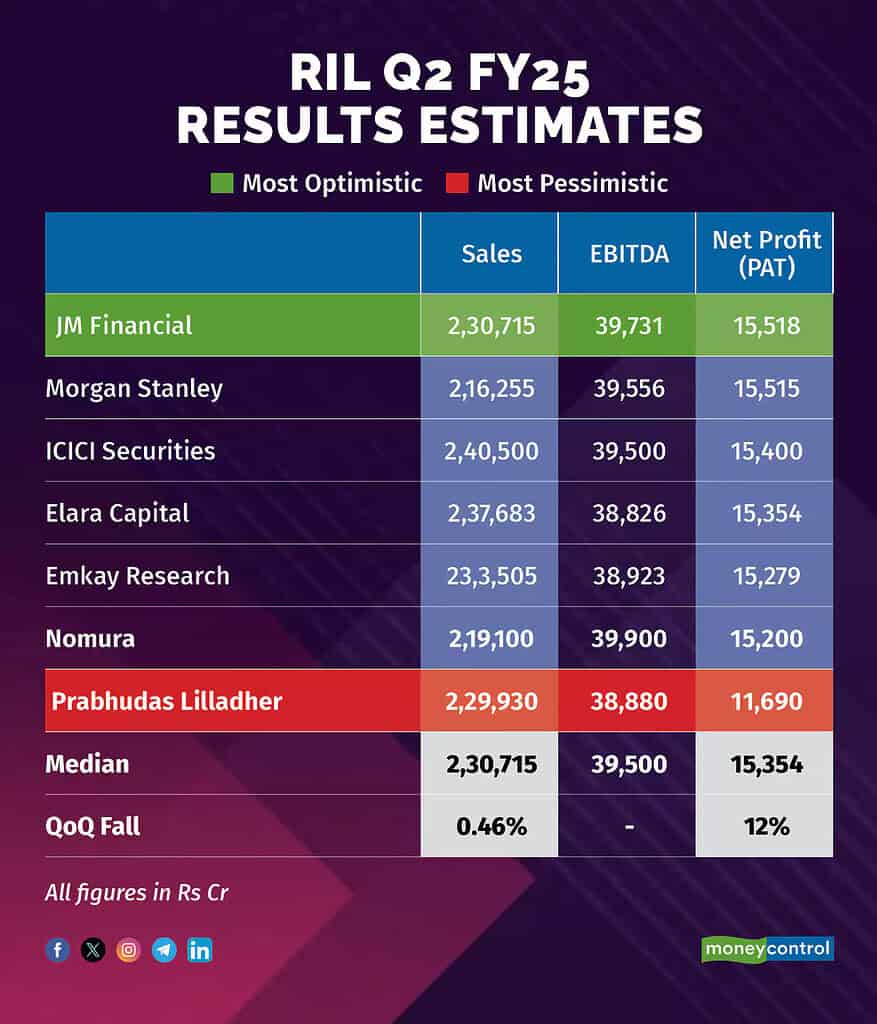Explore the latest Reliance results and their impact on RIL stock. Learn what the Q2 financial highlights mean for investors considering buy, sell, or hold strategies.
The latest Reliance results for Q2 have been released, capturing the attention of investors and analysts alike. As a major market influencer, Reliance Industries Limited (RIL) plays a crucial role in shaping investment strategies. This blog provides a detailed analysis of the Reliance results, their impact on the stock market, and guidance on whether to buy, sell, or hold RIL shares.

Key Financial Highlights from Reliance Results
The Q2 Reliance results showcase notable developments across its primary sectors such as telecommunications, petrochemicals, and retail:
- Telecommunications Surge: Jio continues to excel, with impressive subscriber growth expected to significantly contribute to overall revenue.
- Retail Sector Growth: Reliance Retail’s expansion and rising consumer demand highlight strong performance within this segment.
- Petrochemicals Dynamics: Although global oil price fluctuations present challenges, a recovery in demand is anticipated, reflecting positively in the Reliance results.
Market Expectations Post-Reliance Results
The market is poised for a mixed reaction to the Reliance results. While the telecom and retail achievements may boost confidence, uncertainties in global oil markets and regulatory landscapes might temper enthusiasm. The stock’s opening tomorrow could experience fluctuations, influenced by these diverse factors.

Expert Opinions: Buy, Sell, or Hold Based on Reliance Results?
Buy
- Solid Fundamentals: Long-term investors might consider the Reliance results as a signal to buy, given the company’s diversified portfolio and strategic growth paths.
- Future Prospects: Innovations, particularly in digital and renewable energy initiatives, promise substantial growth, aligning with the positive aspects of the Reliance results.
Sell
- Valuation Peaks: For short-term traders, the current valuation post-Reliance results may suggest profit-taking opportunities.
- Market Volatility: Concerns about short-term global uncertainties might prompt some investors to reduce exposure.
Hold
- Resilient Positioning: Those with medium to long-term outlooks may opt to hold, relying on the stable performance indicated in the Reliance results.
- Awaiting Further Clarity: Investors might prefer to wait for clearer regulatory impacts and economic conditions before making decisive moves.
Recent Stock Trends and External Factors Affecting Reliance Results

The Reliance stock has maintained resilience, underpinned by its market leadership and diversified ventures. However, external factors such as geopolitical tensions, currency shifts, and post-pandemic consumer behavior could influence future outcomes, as reflected in the Reliance results.
Conclusion
The latest Reliance results will undoubtedly stir varied reactions from the market. Whether to buy, sell, or hold depends on individual investment strategies and risk tolerance. As always, thorough research and alignment with personal financial goals are essential. Keep monitoring market trends and expert insights to navigate the implications of the Reliance results effectively.
Read More- Download Your CET Admit Card 2024: A Complete Guide for Rajasthan CET 12th Level Exam








